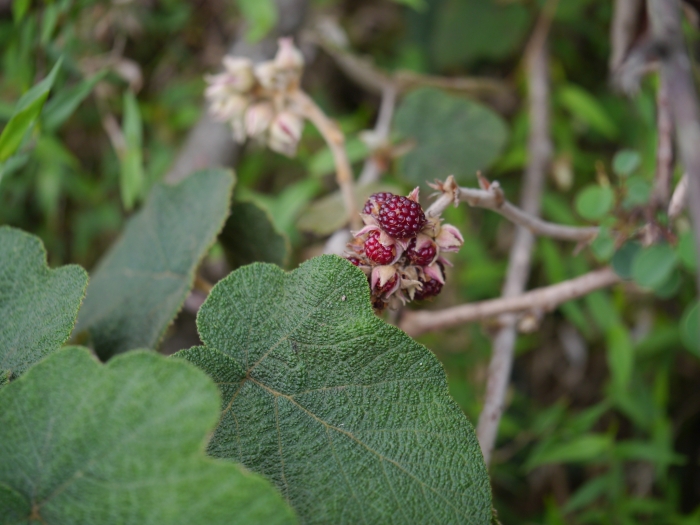Mysore Raspberry
(Rubus indicus)
Mysore Raspberry (Rubus indicus)
/
/

© Dinesh Valke
CC BY-SA 4.0
Image By:
© Dinesh Valke
Recorded By:
Copyright:
CC BY-SA 4.0
Copyright Notice:
Photo by: © Dinesh Valke | License Type: CC BY-SA 4.0 | License URL: http://creativecommons.org/licenses/by-sa/4.0/ | Uploader: dineshvalke | Publisher: iNaturalist |












Estimated Native Range
Summary
Rubus indicus, commonly known as Mysore Raspberry, Indian Raspberry, or Ceylon Raspberry, is a fast-growing deciduous shrub native to a variety of habitats in Asia, from the Himalayas to Southeast Asia, including China and India to the Malesian region. It thrives in upland and montane areas, secondary forests, forest edges, grasslands, roadsides, and disturbed areas, at elevations from sea level to 2400 meters. This species typically reaches a height of 6-12 feet (1.8-3.7 meters) and is known for its arching canes and prickly stems. The white flowers, which bloom in the summer, are followed by edible red to purple berries that are both attractive and a food source for wildlife.
The Mysore Raspberry is appreciated for its fruit production and as an ornamental plant due to its attractive flowers and berries. It is suitable for border planting, creating natural hedges, and for use in fruit gardens. In cultivation, it prefers full sun to part shade and adapts to a range of soil types, including loam and clay, provided they have medium to fast drainage. Regular watering is necessary for optimal growth and fruiting. However, gardeners should be cautious as Rubus indicus can become invasive outside its native range, spreading aggressively and potentially outcompeting native vegetation.CC BY-SA 4.0
The Mysore Raspberry is appreciated for its fruit production and as an ornamental plant due to its attractive flowers and berries. It is suitable for border planting, creating natural hedges, and for use in fruit gardens. In cultivation, it prefers full sun to part shade and adapts to a range of soil types, including loam and clay, provided they have medium to fast drainage. Regular watering is necessary for optimal growth and fruiting. However, gardeners should be cautious as Rubus indicus can become invasive outside its native range, spreading aggressively and potentially outcompeting native vegetation.CC BY-SA 4.0
Plant Description
- Plant Type: Shrub
- Height: 6-12 feet
- Width: 4-6 feet
- Growth Rate: Rapid
- Flower Color: White
- Flowering Season: Summer
- Leaf Retention: Deciduous
Growth Requirements
- Sun: Full Sun, Part Shade
- Water: Medium
- Drainage: Medium, Fast
Common Uses
Border Plant, Edible*Disclaimer: Easyscape's listed plant edibility is for informational use. Always verify the safety and proper identification of any plant before consumption.
Natural Habitat
Native to a variety of habitats in Asia, including the Himalayas, China, India, and the Malesian region
Other Names
Common Names: Indian Raspberry, Ceylon Raspberry
Scientific Names: , Rubus indicus, Rubus rugosus, Rubus wightii,
GBIF Accepted Name: